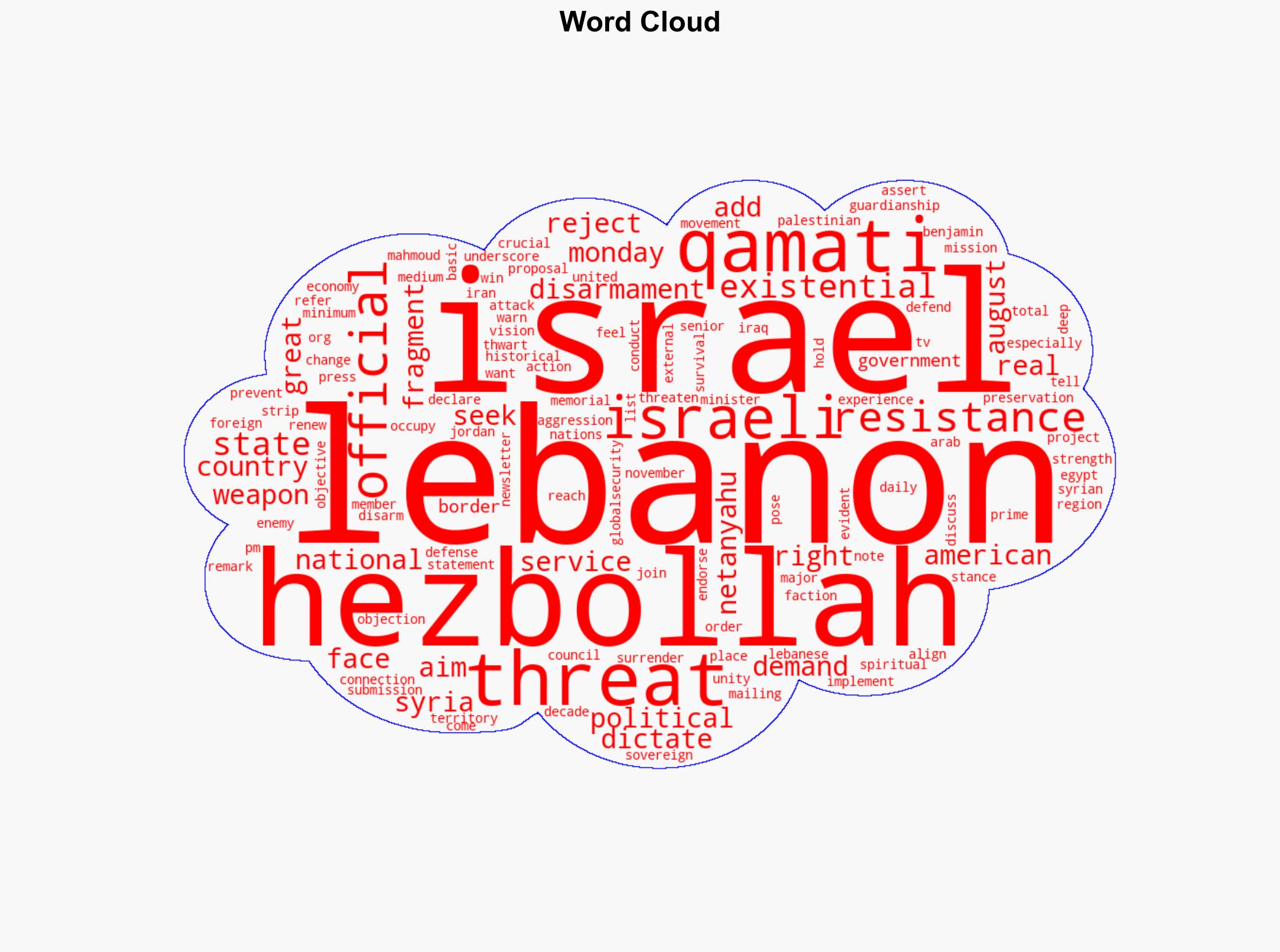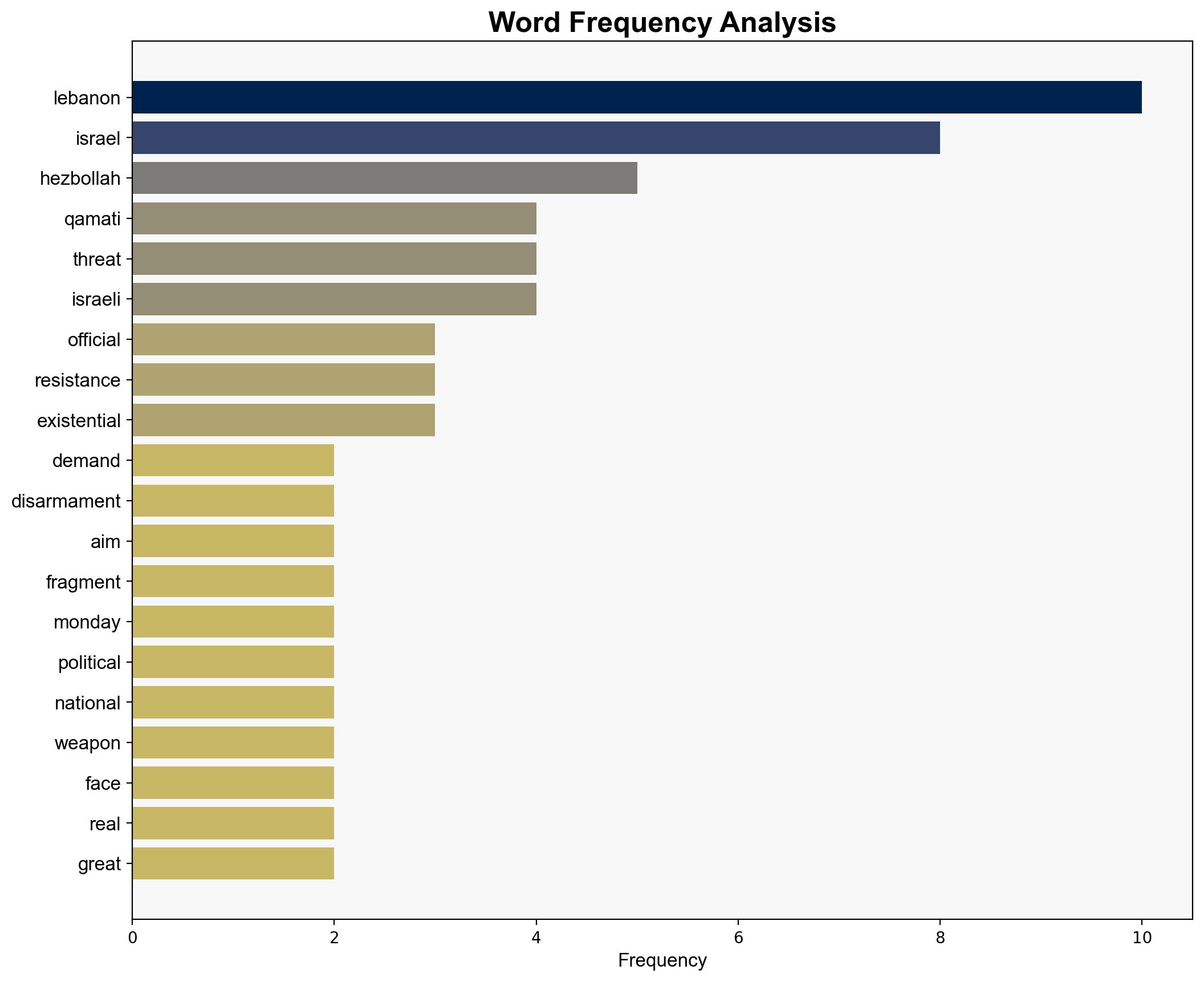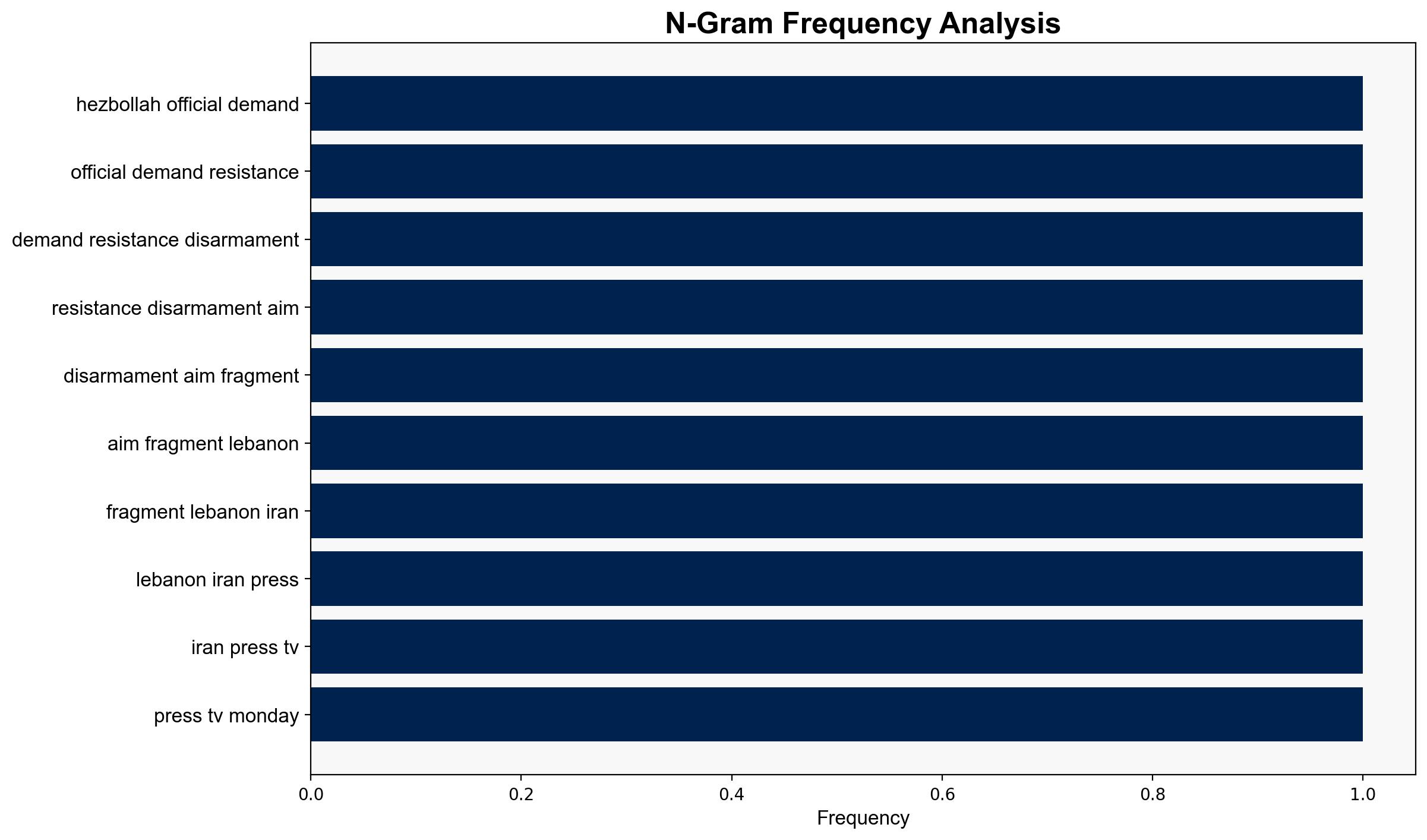Hezbollah official US demand for resistance disarmament aims to fragment Lebanon – Globalsecurity.org
Published on: 2025-11-11
AI-powered OSINT brief from verified open sources. Automated NLP signal extraction with human verification. See our Methodology and Why WorldWideWatchers.
Intelligence Report: Hezbollah official US demand for resistance disarmament aims to fragment Lebanon – Globalsecurity.org
1. BLUF (Bottom Line Up Front)
The strategic judgment is that the U.S. demand for Hezbollah’s disarmament is perceived by Hezbollah as an existential threat, potentially leading to increased internal and regional instability. The most supported hypothesis is that the U.S. aims to weaken Hezbollah’s military capabilities to reduce its influence in Lebanon and the broader region. Confidence Level: Moderate. Recommended action is to engage in diplomatic efforts to address security concerns while promoting stability in Lebanon.
2. Competing Hypotheses
Hypothesis 1: The U.S. demand for Hezbollah’s disarmament is primarily aimed at reducing Hezbollah’s military capabilities and influence in Lebanon to promote regional stability and counter Iranian influence.
Hypothesis 2: The U.S. demand is a strategic maneuver to fragment Lebanon politically, weakening Hezbollah’s position and creating internal divisions that could destabilize the country.
Hypothesis 1 is more likely due to the U.S.’s historical stance on countering Iranian influence and Hezbollah’s military capabilities. However, Hypothesis 2 cannot be entirely dismissed given the complex political landscape in Lebanon and the potential for unintended consequences.
3. Key Assumptions and Red Flags
Assumptions: The U.S. has a coherent strategy to counter Hezbollah’s influence; Hezbollah perceives disarmament as a direct threat to its existence.
Red Flags: Hezbollah’s rhetoric may be exaggerated to rally internal support; potential bias in reporting from Iranian Press TV.
Deception Indicators: Statements from Hezbollah may be designed to portray the U.S. as an aggressor to gain regional sympathy.
4. Implications and Strategic Risks
Political: Increased polarization within Lebanon, potentially leading to governmental paralysis or conflict.
Cyber: Potential for cyber operations targeting Lebanese or U.S. interests in retaliation.
Economic: Economic instability if political tensions escalate, affecting foreign investment and aid.
Informational: Propaganda campaigns by Hezbollah or allied entities to sway public opinion against the U.S.
5. Recommendations and Outlook
- Engage in multilateral diplomatic efforts to address security concerns while maintaining Lebanese sovereignty.
- Enhance intelligence-sharing with regional allies to monitor Hezbollah’s activities and intentions.
- Best Scenario: Diplomatic resolution leads to reduced tensions and stabilization in Lebanon.
- Worst Scenario: Escalation of conflict leading to regional instability and humanitarian crisis.
- Most-likely Scenario: Continued political tension with sporadic incidents of violence and unrest.
6. Key Individuals and Entities
Mahmoud Qamati (Hezbollah Political Council), Benjamin Netanyahu (Israeli Prime Minister)
7. Thematic Tags
Counter-Terrorism
Structured Analytic Techniques Applied
- ACH 2.0: Reconstruct likely threat actor intentions via hypothesis testing and structured refutation.
- Indicators Development: Track radicalization signals and propaganda patterns to anticipate operational planning.
- Narrative Pattern Analysis: Analyze spread/adaptation of ideological narratives for recruitment/incitement signals.
Explore more:
Counter-Terrorism Briefs ·
Daily Summary ·
Methodology





